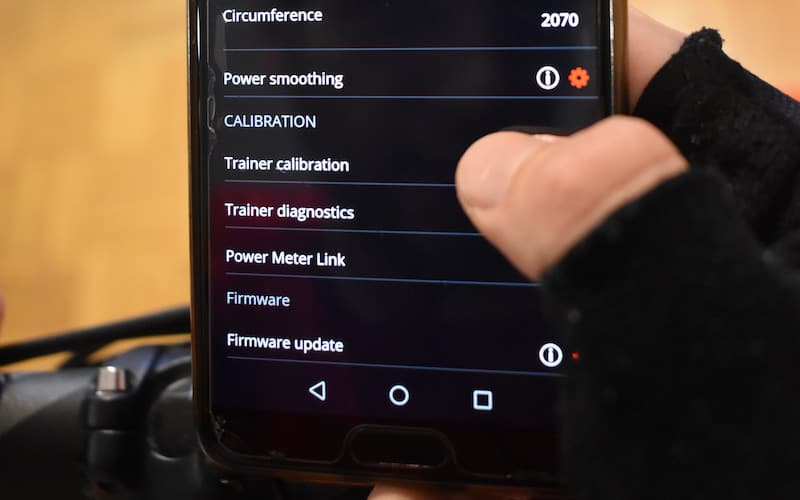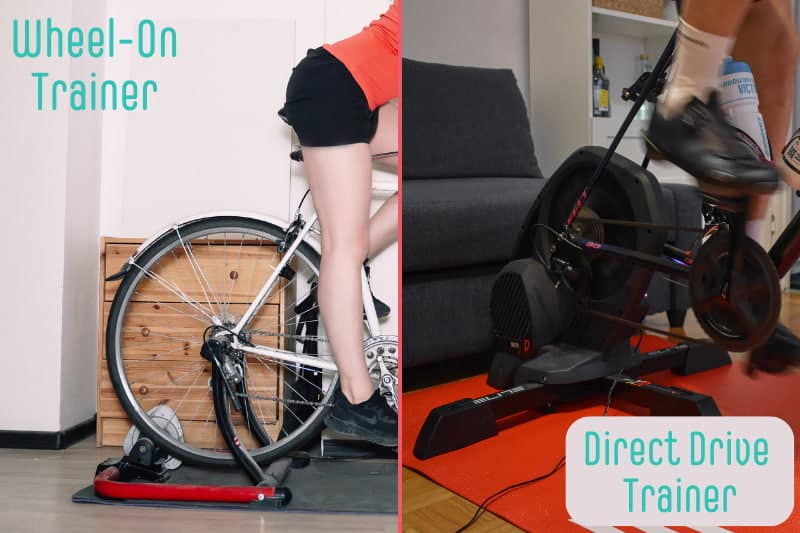Since moving into my own flat, my turbo trainer no longer has a fixed place. I have to set it up before every use and put it away after the training. So I started wondering if the calibration frequency has to change as a result.
A smart trainer needs to be calibrated every time it’s moved or the settings are changed. You should also calibrate it before each event (race or group ride) and before performing the FTP test. Regardless of other factors, it is recommended to calibrate it at least once a week.
Many factors influence the accuracy of the measurement, so regular calibration is essential. However, if this is a burden to you, there are also smart trainers that do not need calibration.
Why do I need to calibrate my trainer?
Riding on a trainer is quite different from riding outside. Not only is the environment different, but the transfer of your energy is also different.
When riding outside, every watt of power generated is transferred to the rear wheel via the drivetrain. The quality and condition of the latter affect the amount of transferred power, but in general, the losses are negligible.
However, when riding on a trainer, a new piece of equipment comes into the equation. While the power transmitted through the drivetrain remains the same as outside, the trainer records the data less accurately, resulting in a loss of power.
Every watt of power wasted is unwanted.
Even with a calibrated trainer, some energy is lost. However, the losses are even greater if the trainer is not calibrated. If you’re riding only for fun, this might not be a problem, but if you participate in a virtual race or training, every watt of power lost is unwanted.
You should therefore calibrate the trainer to maximize the accuracy of the measurement. It will never be 100%, but with calibration will be much closer to it.
Do I need to calibrate the trainer before every use?

Calibration is essential for accurate power measurement. However, it’s a pretty tedious process that you soon get tired of. Before calibration, you must warm up the trainer, which increases the overall training time.
Almost every cyclist who owns a turbo trainer has asked himself whether calibration is necessary before every ride. The answer is NO, but that doesn’t mean the calibration process can be completely abandoned.
It is recommended that you calibrate your trainer:
- Once a week
- When you move it
- When you change settings
- Before an FTP test
- Before events (race or group ride)
You should calibrate the trainer every time you need to have the most accurate data possible. Any movement of the trainer can already introduce a measurement deviation, so try to move it as little as possible or calibrate it after every major movement.
Even if you have a dedicated spot for a trainer and don’t move it, you still need to calibrate it once a week. The accuracy can be significantly reduced due to environmental influences.
Factors affecting trainer measurement accuracy
The accuracy of a trainer is affected by a number of factors, both environmental and mechanical. It’s good you know them, so you can pay more attention to them and know when your trainer needs calibration.
- Humidity. Changing room humidity affects the trainer’s accuracy. If you have a trainer in a room where the humidity changes regularly (e.g. a basement), you should calibrate your trainer more often. I recommend at least twice a week or even before every use.
- Temperature. Similar to humidity, temperature also affects the accuracy of the trainer. Larger temperature changes we witness in autumn and winter will reduce the trainer’s accuracy. I advise you to keep the trainer in a room with as constant temperature as possible. Otherwise, you’ll need to calibrate the trainer more frequently.
- Movements. Any movement of the trainer results in a decrease in accuracy. Major movements require recalibration, while minor movements (e.g. slight impact with the trainer) do not require recalibration.
- Tire pressure. Owners of wheel-on trainers should pay attention to another factor. Changes in tire pressure can greatly affect accuracy. Try to keep the pressure as constant as possible or calibrate your trainer more often.
- Price. The quality of the trainer is reflected in the price. More expensive trainers are not only more accurate but also require less calibration. The cheaper the trainer, the more often you will need to calibrate it to get the best possible accuracy.
Many factors influence the trainer. Each of them will slightly reduce the accuracy of the measurement, but when you add up all the little things, you end up with a larger deviation. Calibration combines all negative factors into a whole, which the trainer tries to neutralize as much as possible.
Calibration frequency: wheel-on vs. direct drive trainers

There are two types of smart trainers – a wheel-on and direct drive.
On the wheel-on trainer, you attach a bike with a rear wheel still on. The latter is in contact with the roller, which rotates the flywheel as you pedal.
When you’re using a direct drive trainer, you remove the rear wheel and connect the drivetrain with the trainer’s cassette. This then rotates during pedaling and rotates the flywheel.
Two completely different mechanisms also have different requirements when it comes to calibration. The process is the same, the only difference is the frequency.
Wheel-on trainers require more frequent calibration. Their accuracy is poorer as they are more susceptible to the factors listed above. Therefore you should calibrate them at least once a week.
On the other hand, direct drive trainers are slightly more resistant to changes and, in the absence of major movement, can provide accurate measurements up to two weeks after calibration.
Personally, I calibrated my wheel-on trainer before every ride, while now I’m calibrating my direct drive trainer once a week. The accuracy of the latter is still very good even after one week.
Turbo trainer that does not require calibration
Trainer manufacturers know that calibration is a tedious process. That’s why they have been looking for a solution to get rid of it. Garmin, the company behind Tacx trainers, found it.
The Tacx Neo 2T doesn’t need calibration. It is designed to contain no parts that are affected by humidity or temperature, so the accuracy doesn’t decrease. Garmin claims the trainer’s measurement is accurate to within 1%.
With Tacx Neo, calibration is a thing of the past.
The Tacx Neo 2T smart trainer not only does not need calibration, it does not even allow it. Some applications detect the trainer model when connected and disable the calibration function, while others don’t. This can confuse the user as they start the calibration but cannot complete it due to the fact that the trainer is not sending any necessary data.
The absence of the need for calibration comes at a cost. Tacx Neo 2T is the most expensive trainer on the market. Its price is constantly changing, so check the current price on Amazon.

